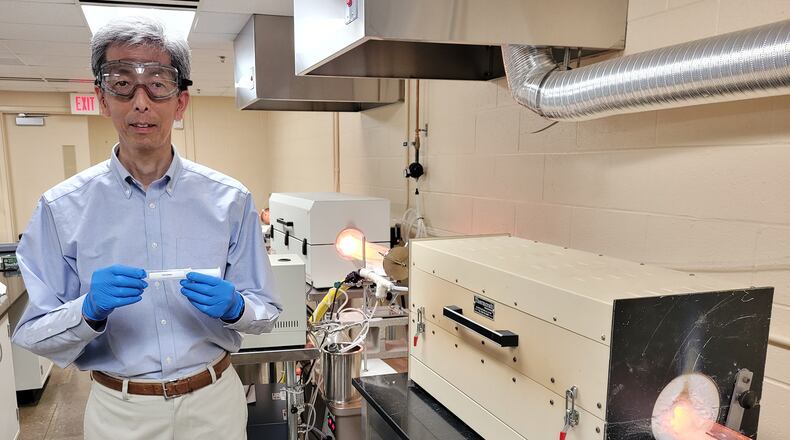A report on water quality, “Dayton Water Quality and Infrastructure Review,” and commissioned by a group made up of local business and government leaders in 2021, found the water quality in Dayton was good, but the greatest threat to the water supply is PFAS. The group of toxins is the most immediate threat to the Buried Valley Aquifer, where the majority of communities in the region get their drinking water, the report said.
Municipal tap water in the Dayton region is safe to drink under Environmental Protection Agency guidelines, according to both the EPA and Dayton’s water department.
But a 2021 report also noted the city’s Mad River wellfield is directly adjacent to and downgradient from Wright Patterson Air Force Base.
The base, which says it no longer uses PFAS chemicals in firefighting foam, has been studying PFAS contamination in its vicinity since 2016, after a sampling by the state in 2014 and 2015 “detected high levels in the groundwater in several areas,” the 2021 report notes.
Any runoff from the use of PFAS-based products leaches from the soil into groundwater, said Takahiro Yamada, the principal environmental chemist in UDRI’s power and energy division. He noted the chemicals have been found almost everywhere around the globe.
PFAS can last for thousands of years, do not degrade naturally in the environment, and are difficult to destroy, Yamada noted. That’s why they are called “forever chemicals.”
Yamada said there are ways to get rid of PFAS currently. The best way to collect the material from groundwater is to use something like a granular activated carbon or ion exchange resin. The process moves the PFAS from the water to the collection media.
“During the regeneration process, PFAS would be desorbed from the media, and could then be thermally destroyed,” Yamada said.
The EPA and Department of Defense have been pursuing the best conditions to completely destroy PFAS, and Yamada and his team are part of that effort.
“We burn the substances in a well-controlled environment, then collect and analyze the gas emissions to see if any PFAS remain and what kind of incineration byproducts are produced if they are not completely decomposed,” Yamada said. “Each compound has different characteristics, so the process for destroying them may vary somewhat. But we’ve determined the key factors are incineration temperature and exposure time, with moisture level of the PFAS also affecting the conditions for complete destruction.”
The researchers are collaborating with the EPA to determine whether their test results are consistent with those of tests performed by the EPA using a pilot-scale incinerator.
UDRI is currently funded by the EPA, directly as well as through a DOD-sourced EPA Strategic Environmental Research and Development Program. In addition to PFAS-destruction studies, the EPA is funding a program at UDRI to investigate the potential impact of burning PFAS-laden biosolids produced at wastewater treatment facilities.
“The process of wastewater treatment generates biosolids, which can be dried and incinerated to reduce volume or to produce electricity,” Yamada said. “The concern is whether burning PFAS-laden biosolids will release the PFAS into the atmosphere.”
Yamada said the team anticipates water filters that trap most PFAS will be made available for consumers who are not on municipal water, but they will be asked to bring used filters to a facility so they can be properly processed so the PFAS in them can be removed and destroyed.
The total for contracts beginning in 2020 and from various funders is close to $2 million, according to Yamada. The project is currently funded through 2024, but Yamada said he expects to continue to gain new customers as the importance of mitigating PFAS is becoming more widely understood. The EPA is the primary government sponsor.
Staff reporter Tom Gnau contributed to the story.
About the Author


